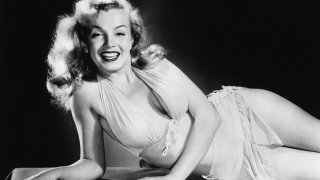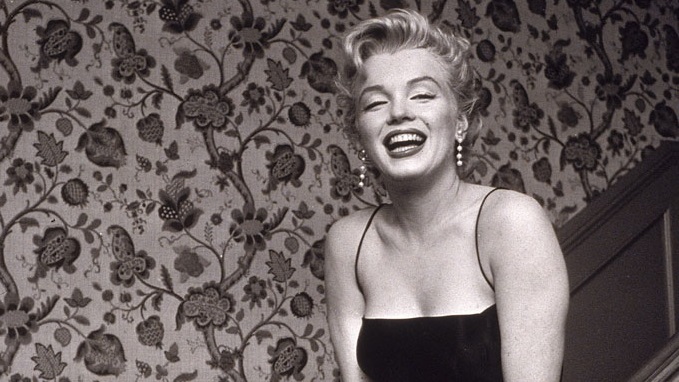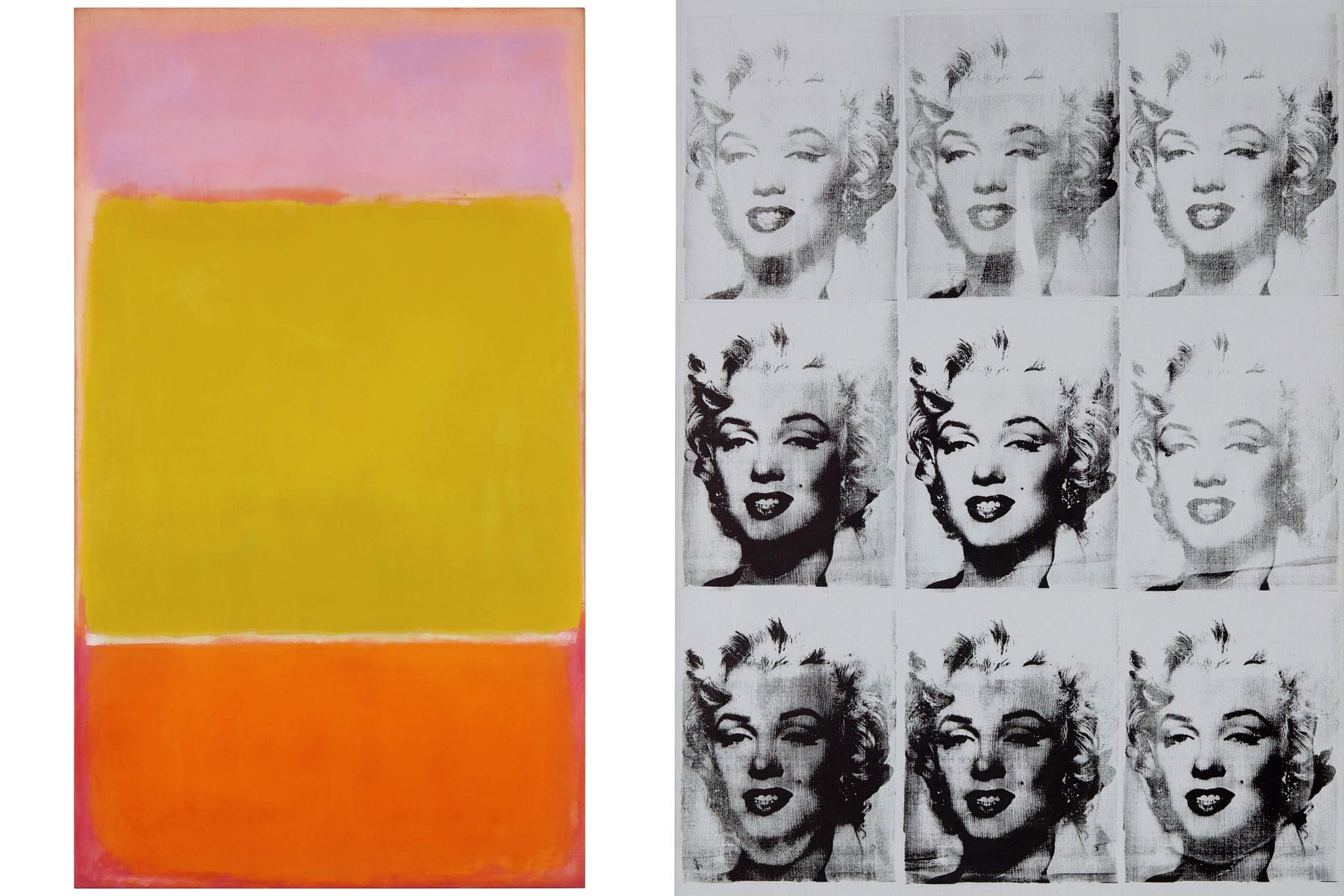
For the past 60 years, it's been impossible to separate Marilyn Monroe's longevity as a superstar from her death.
And yet it's the cultural punch she packed when she was alive -- radiating beauty and charisma from the screen while her tumultuous personal life perpetually overshadowed her serious acting ability -- that made people obsessed with her untimely demise.
WATCH ANYTIME FOR FREE
Stream NBC10 Boston news for free, 24/7, wherever you are. |
In turn, ever since a 36-year-old Monroe was found dead -- or was she? -- at her Brentwood home on Aug. 5, 1962, for many there's been a mystery to be solved along with a flesh-and-blood person to be mourned.
There isn't much about the woman born Norma Jeane Mortenson that hasn't been thoroughly parsed, from her childhood bouncing between foster homes and never knowing her father to her longing to have a child of her own to her affairs with men in very high places and the subsequent conspiracy theories that her love life got her killed.
Get updates on what's happening in Boston to your inbox. Sign up for our News Headlines newsletter.
But as the icon herself is heard saying in the new documentary "The Mystery of Marilyn Monroe: The Unheard Tapes," now streaming on Netflix, "How do you go about writing a life story? Because the true things rarely get into circulation. It's usually the false things. It's hard to know where to start if you don't start with the truth."
This film starts with audio recordings from research that journalist and author Anthony Summers began in 1982, when the Los Angeles County District Attorney's Office started a threshold inquiry into Monroe's death by barbiturate overdose, a precursor to deciding whether to open a full-blown investigation.
According to his tally, Summers interviewed a thousand people, including 650 on tape, two dozen of whom are heard from here.
While most of the subject matter is well-trod ground (aside from other countless deep dives into her life and death, this project is built upon Summers' 1985 book "Goddess: The Secret Lives of Marilyn Monroe"), the dichotomy between how the world saw the actress and what her experience of superstardom actually was never fails to leave a haunting impression.
And if you don't know the purported real timeline of events that Summers lays claim to, the truth having been hiding on the receiving end of some well-placed phone calls, watching him recount his detective work in that capacity can be quite eye-opening.
Here are all the times Marilyn's story made us shout "You deserved so much better!" at the TV:
The Soul of an Artist
Knowing that her appearance worked both for and against her (though mainly for), Marilyn Monroe wanted more than anything to be taken seriously as an actress.
"If I am a star, the people made me a star… but I do want to be wonderful, you know?" she's heard saying in an audio recording. At another time, she said, "What I'd like to accomplish, I would like to be a good actress, a true actress. An artist, with integrity."
Among the dozens of old interview clips included in the Netflix documentary, her "Gentlemen Prefer Blondes" co-star Jane Russell told journalist Anthony Summers that they'd work all day and Monroe would meet with her acting coach at night. "She was very bright and she wanted to learn," Russell said, "and was interested in everything to help her control her career."
John Huston, who directed Monroe in one of her first films, 1950's "Asphalt Jungle," and her last finished movie, 1961's "The Misfits," recalled meeting the "very fresh, very attractive, rather timid, shy" young woman for the first time at her audition, where she "read her lines beautifully."
And her appeal went beyond her looks, the filmmaker noted. Though she was the "sex symbol of this century," he noted in the 1980s, "it wasn't just a sex thing at all. Women felt just the same as men. There was something deeply moving about Marilyn, always."
Bronx Bomb
Monroe met New York Yankees star Joe DiMaggio after he retired and they dated for more than a year before eloping at San Francisco City Hall on Jan. 14, 1954, the second marriage for each of them. They both wanted children, but otherwise their brief union was plagued by not being on the same page about her career.
The notoriously jealous DiMaggio was on set the day they shot the iconic windblown-skirt moment for "The Seven Year Itch" in front of Manhattan's Trans-Lux 52nd Street Theater, and he blew up about it in the lobby. Talking to Summers, the film's hairdresser Gladys Whitten remembered Monroe coming to work the next day with bruises on her shoulders. "With a little makeup and everything, she went ahead and worked," Whitten said.
Monroe filed for divorce that October, telling reporters at a news conference with her lawyer, "Our marriage wasn't a happy one, it ended in nine months, unfortunately. I don't know what else to say."
DiMaggio, who had a son with his first wife, never remarried and his attorney Morris Engelberg, who was among those at his bedside when he died in 1999, told Vanity Fair that the athlete's last words were, "'I'll finally get to see Marilyn.'"
Lasting Childhood Trauma
Monroe never named names, but she was sexually abused at some point during her girlhood, when she lived in more than 10 foster homes and spent time in an orphanage while her mother was in and out of psychiatric hospitals. She never knew her father (an upcoming French documentary purports to have new information about that mystery), and that absence haunted her throughout her life.
"She knew people who were psychotic from [being molested] and she felt that at least she'd survived that," her actress friend Peggy Feury told Summers of Monroe's take on her abuse. Monroe once said, as quoted by Summers in the Netflix film, "'I knew it was wrong, but to tell you the truth I think I was more curious than anything else. Nobody ever told me about sex and frankly I never did think it was all that important.'"
Dress manufacturer and close Monroe friend Henry Rosenfeld claimed to Summers that Monroe — one night during a party game in which everyone was sharing what they wanted most in the world — "said she'd want to put on a black wig, pick up her father at a bar, have him make love to her, and then she'd say, 'Well, how does it feel now to have a daughter that you've made love to?'"
The Crucible
By all accounts, including her own — asked by a reporter what attracted her to him, she replied, "Have you seen him?" — Monroe was head over heels for playwright Arthur Miller, whom she married in 1956. And he saw... potential in her.
"Arthur Miller thought she was really intelligent and had a brain that was never cultivated. And that's where he courted her," Monroe's friend Arthur James posited to Summers.
In London while Monroe was directed by Laurence Olivier in 1957's "The Prince and the Showgirl," she saw some of Miller's notes lying around and was devastated to read some very disparaging words about "how disappointed" he was by his wife and that he had thought she was "some kind of angel," but he was wrong.
Meanwhile, she was telling people she couldn't wait to wrap that film (for which she was nominated for a BAFTA for Best Foreign Actress) so that she could go home and have a baby.
Marilyn's Biggest Heartbreak
After having a miscarriage in September 1956 and losing an ectopic pregnancy in 1957, Monroe was pregnant again during the making of "Some Like It Hot" in 1958. And though "she was slightly discombobulated at all times," as director Billy Wilder put it to Summers, it's one of her best, most enduring films.
"I had no problem with Monroe," Wilder emphasized. "Monroe had problems with Monroe. She had problems with herself."
She miscarried again that December, after they finished filming.
Not Herself
When Monroe reported for work on "The Misfits," which was written by Miller, she was drinking heavily and abusing drugs — amphetamines to stay up and barbiturates to sleep.
"Very soon we were aware that she was a problem," director John Huston told Summers. "She'd be late on the set always. Sometimes the whole morning would go by. Sometimes she'd be alright. Occasionally, she'd be practically non compos mentis," meaning not of sound mind.
Huston said he found out over the course of the film what the problem was, and "I remember saying to Miller one day," he recalled, "I said, you know, that if she went on at the rate that she was going, she'd be in an institution in two or three years, or dead. And I said anyone who allows her to take a drug ought to be shot."
Three days after "The Misfits" wrapped, co-star Clark Gable had his fourth heart attack and died 11 days later, on Nov. 16, 1960.
Monroe and Miller divorced in January 1961.
Psychiatric Clinic
Monroe spent four days at the Payne Whitney Psychiatric Clinic in New York and reporters and photographers were waiting for her the minute she stepped outside, having received word that she was there to be treated for a sleeping pill addiction.
"I feel wonderful, thank you," she replied when asked how she was doing.
In the Mood for Love
Monroe grew relatively close to the family of the psychiatrist who treated her in the last year of her life, Dr. Ralph Greenson. He died in 1979, but his wife Hildi, daughter Joan and son Danny all spoke to Summers for his research into the actress' last days — which, as he explains at the beginning of the film, were inextricable from her early days.
Danny Greenson told Summers his father had never had a patient die by suicide, and that he never treated anyone as "unorthodoxly" as he did Monroe. "His feeling was that, because of who she was, she could never be hospitalized," Danny said, "so given that he couldn't do that, his feeling was the best shot he had was to try to treat her in this highly unusual, unorthodox kind of way that he did," including making house calls.
The son admitted that he always thought the Hollywood crowd was full of crap, but he liked Monroe — and he appreciated that she shared his left-leaning politics.
Joan recalled Monroe telling her about a "really terrific, really neat, cute" new man in her life, whom the actress said was too important to identify, instead just calling him "the General."
An Affair to Remember
According to multiple Kennedy and Monroe biographers, the actress' alleged affair with John F. Kennedy continued into his presidency and was largely conducted out in California. He would go out there ostensibly to visit his brother-in-law and Rat Pack member Peter Lawford, who'd throw debauched parties at his Malibu home — as remembered to Summers by Dean Martin's ex-wife Jeanne Martin.
But "the General" Monroe referred to was believed to be U.S. Attorney General Robert F. Kennedy, John's younger brother and a married father of 10 with one on the way when he was assassinated in 1968.
"Peter would obviously be sort of pimping for both Kennedys," Jeanne said of Lawford planning gatherings that served as a convenient place for illicit meetings. "They would do it just as soon in front of anybody, wives [such as herself] could be in the other room."
Monroe "spoke quite openly" about her feelings for Bobby Kennedy, her friend Arthur James told Summers. "Oh, nothing but love. Nothing but admiration."
In the Wrong Place at the Wrong Time
It being in the middle of the Cold War, the FBI kept a file on Monroe primarily focused on left-wing politics and any possible Communist ties or sympathies on her part. (Miller had been a member of the League of American Writers, which included a number of Communists, from 1935 until 1943, and he ended his friendship with Elia Kazan after the director named names for the House Un-American Activities Committee.)
In addition to that scrutiny, Monroe was also caught in the middle of the Kennedy administration's ongoing feud with union leader Jimmy Hoffa, who had helped amass support for JFK's election but was then targeted by Bobby's Justice Department. So, he hired a private investigator to dig up dirt on the brothers, according to the PI, Fred Otash — and that included bugging both Lawford and Monroe's homes.
Meanwhile, Monroe had finally treated herself to what was supposed to be a place of refuge, her house in Brentwood. "My father encouraged that she alone as a person could own and put down roots and have her own place," Joan Greenson recalled. "She was excited about establishing her own sort of family."
Last Picture Show
Monroe had started shooting Something's Got to Give (incidentally co-starring Dean Martin) in April 1962. As relayed by George Cukor's nurse, Robin Thorne, to Summers, the director had guessed that Monroe would end up the most popular actress of her generation, if not the whole century — but he felt her best work wouldn't come until later in life.
"She had a great, untapped dramatic talent," he once said.
John Huston had also said of Monroe that she "went right down into her own personal experience for everything. She would reach down and pull something out of herself that was unique and extraordinary. She found things about womenkind in herself. She had no technique, it was all the truth. It was only Marilyn, but she was Marilyn-plus."
Like Yesterday's News
A couple months after Monroe's infamous performance of "Happy Birthday" for President Kennedy at Madison Square Garden on May 19, 1962, according to multiple accounts, Bobby told her to never call either him or John again.
"She was hurt, terribly hurt when she was told directly never to call or contact again, Robert or John," her friend Arthur James told Summers. "That was an order. Jack didn't contact her, Bob did. And that's what killed her."
The Dispute Over Marilyn's Final Hours
According to the original account of Monroe's final hours, her housekeeper Eunice Murray recalled the actress retiring to her bedroom at 8 p.m. on Aug. 4, 1962. At around 3 a.m., Murray woke up and saw that Monroe's bedroom light was still on. The door was locked and there was no answer, so Murray called Dr. Greenson.
He then drove the mile-and-a-half to Monroe's house and could see through her bedroom window the star lying in bed on her stomach. Police were called at 4:25 a.m.
But Summers uncovered an alternate version of events, one in which Monroe was technically still alive during the ambulance ride to St. John's hospital in Santa Monica, and after she died she was transported back to her house.
All of which was purportedly to give Bobby Kennedy enough time to get to the airport and have Monroe's home cleared of any trace of her association with either brother.
The Marilyn Report
But despite the pile-up of innuendo and finger-pointing, Summers' conclusion was still that Monroe took too many sleeping pills all on her own and died.
Whether she intended to kill herself or it was an accident remains the unsolvable mystery, though the heartbreaks leading up to that night always seem to add up in a way that suggests she was unhappy enough not to have cared what happened to her.
Noting how "wonderful" Cukor had been to her on the set of "Something's Got to Give," which was never finished, Monroe said, "To be happy is almost as difficult as trying to be a good actress. You have to work at both of them."
The Los Angeles D.A.'s 1982 inquiry, which started in the face of renewed speculation that Monroe was murdered because of her political ties, re-confirmed the original findings from 1962.
"Based on the evidence available to us, it appears that her death could have been suicide or come as a result of an accidental drug overdose," then-District Attorney John Van de Kamp said at a press conference. "Permit me to express a faint hope that Marilyn Monroe be permitted to rest in peace."
"The Mystery of Marilyn Monroe: The Unheard Tapes" is streaming on Netflix.



